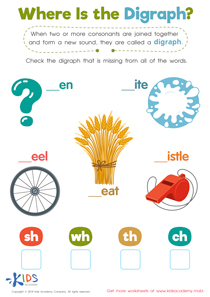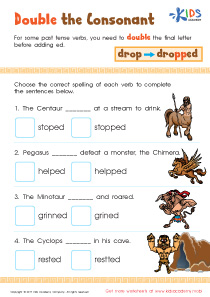Normal Consonant Blends Worksheets for Ages 5-8
6 filtered results
-
From - To
Explore our engaging Normal Consonant Blends Worksheets designed specifically for children ages 5-8! These interactive resources help young learners master blending consonants and enhance their reading skills in a fun, engaging way. Our worksheets include a variety of activities, from matching to word-building, covering essential consonant blends such as "br," "cl," and "sp." Each worksheet is crafted to support phonetic understanding and boost confidence in early literacy. Perfect for classroom use or at-home practice, these worksheets encourage hands-on learning and make developing reading skills an enjoyable experience. Dive into a world of consonant blends and help your child become a confident reader today!
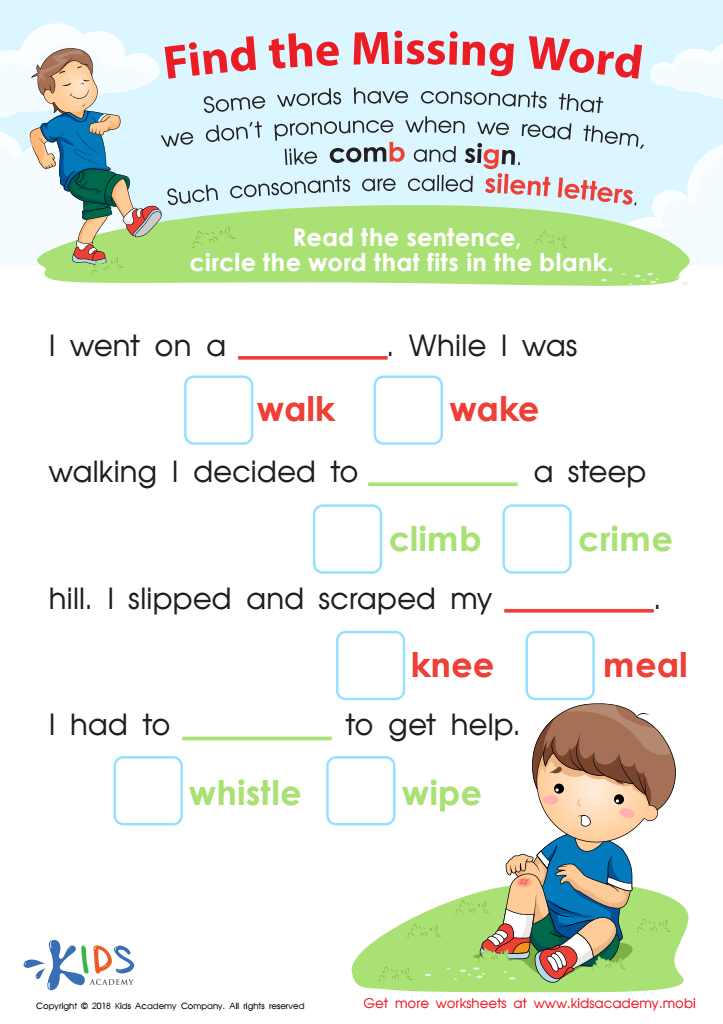

Find The Missing Word Worksheet
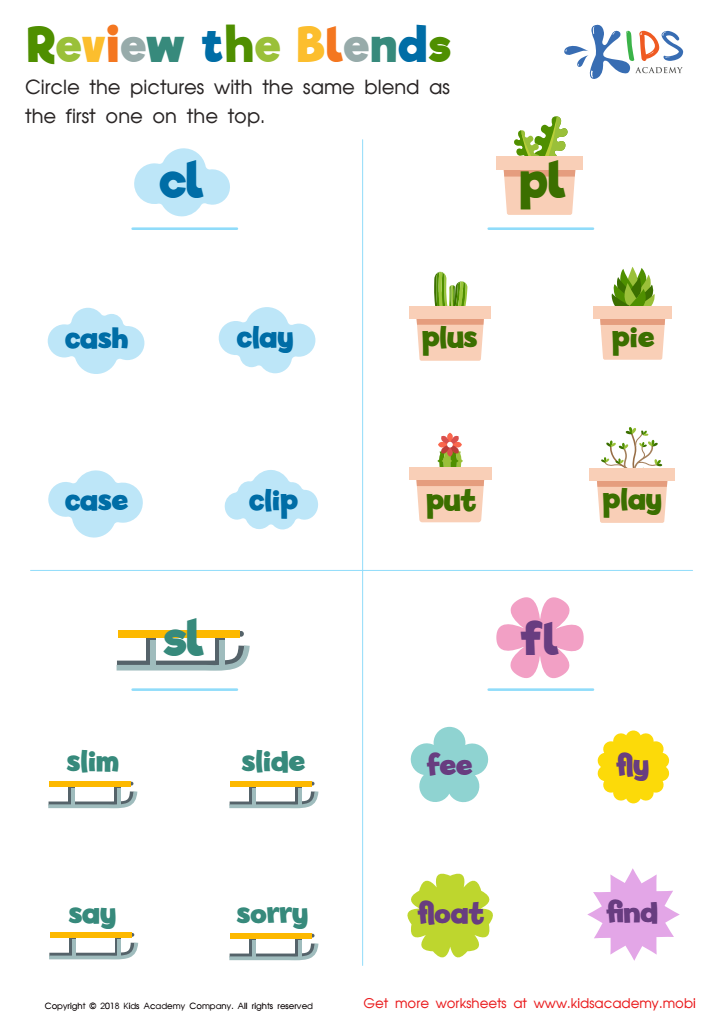

Review the Blends Worksheet
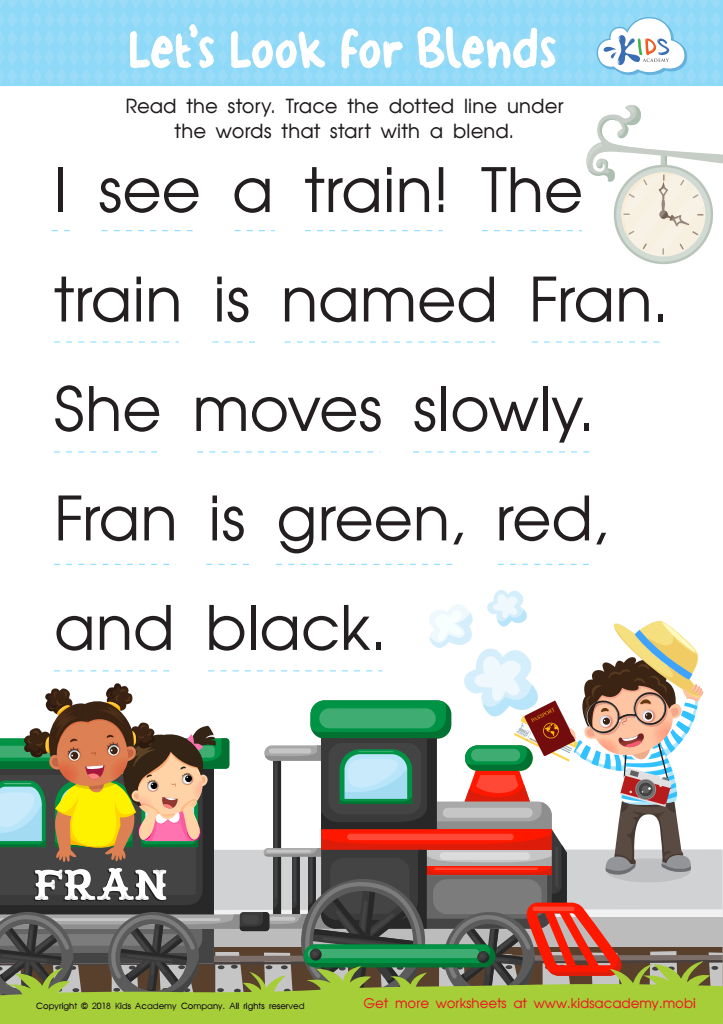

Let's Look for Blends Worksheet
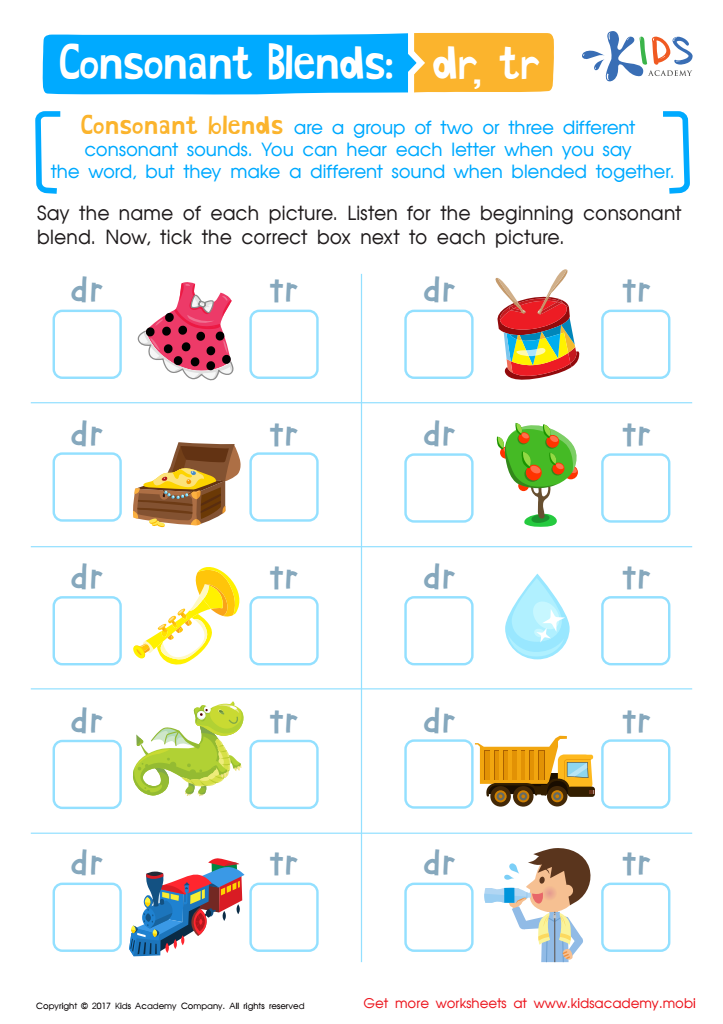

Consonant Blends: "Dr" and "Tr" Printable
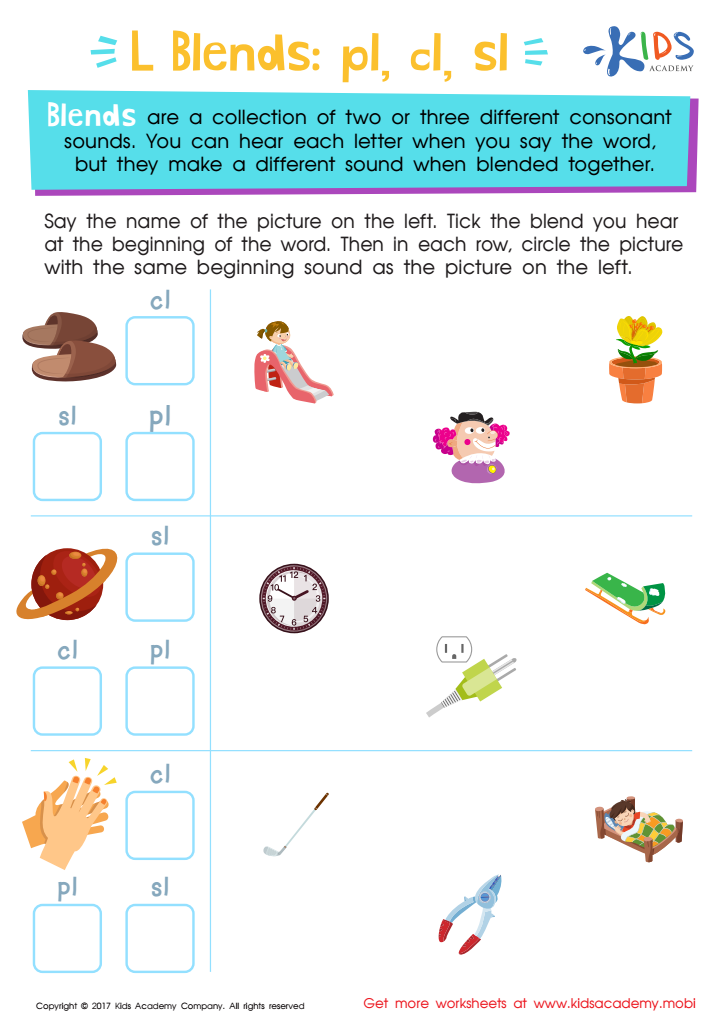

L Blends: "Pl", "Cl" and "Sl" Printable
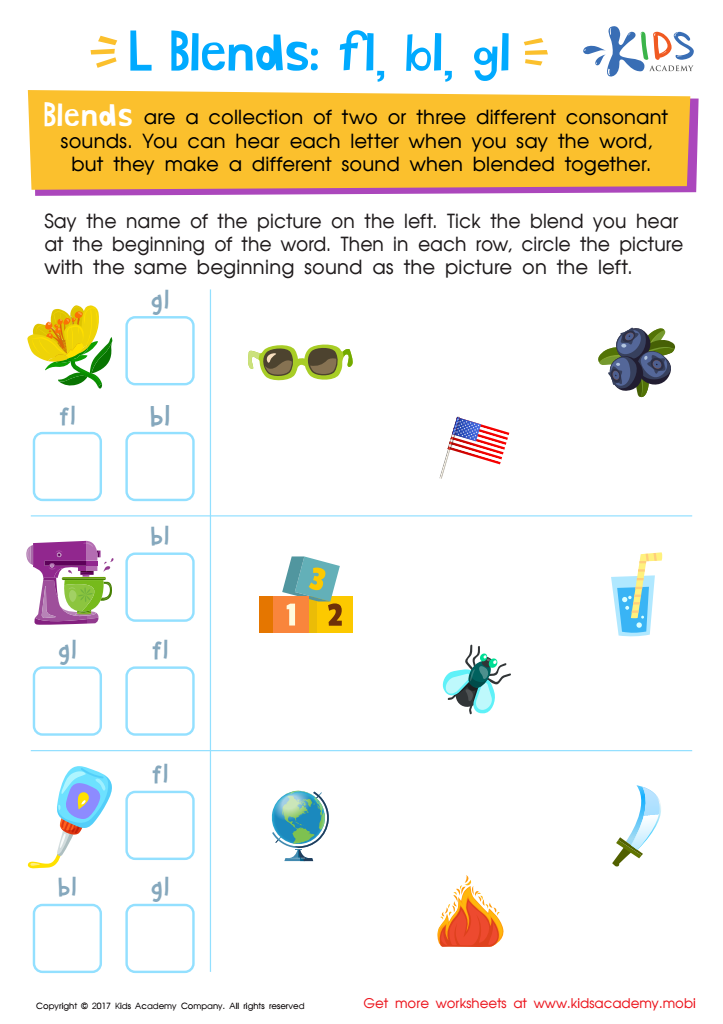

Blending Consonants: "Fl", "Bl" and "Gl" Printable
Parents and teachers should care about normal consonant blends for children ages 5-8 because these blends are essential building blocks for reading and writing skills. A consonant blend involves an amalgamation of two or three consonants that are pronounced together while retaining their distinct sounds, such as in “bl” in "blue" or “str” in "street." Mastery of blends helps children decode unfamiliar words, enhancing their reading fluency and comprehension.
Moreover, understanding consonant blends supports vocabulary development, as children encounter a wider variety of words. This skill also lays a strong foundation for spelling, as it aids students in breaking down words into their phonetic components. By focusing on blends, educators can provide targeted support that aligns with phonics instruction, thereby reinforcing essential literacy skills in fun and engaging ways.
Engaging children in activities centered around consonant blends—like games, songs, and rhymes—encourages a love for language and enhances listening skills. Ultimately, ensuring children master normal consonant blends equips them with tools for academic success and lifelong learning, reinforcing the critical link between early literacy experiences and future educational achievement.
 Assign to My Students
Assign to My Students





